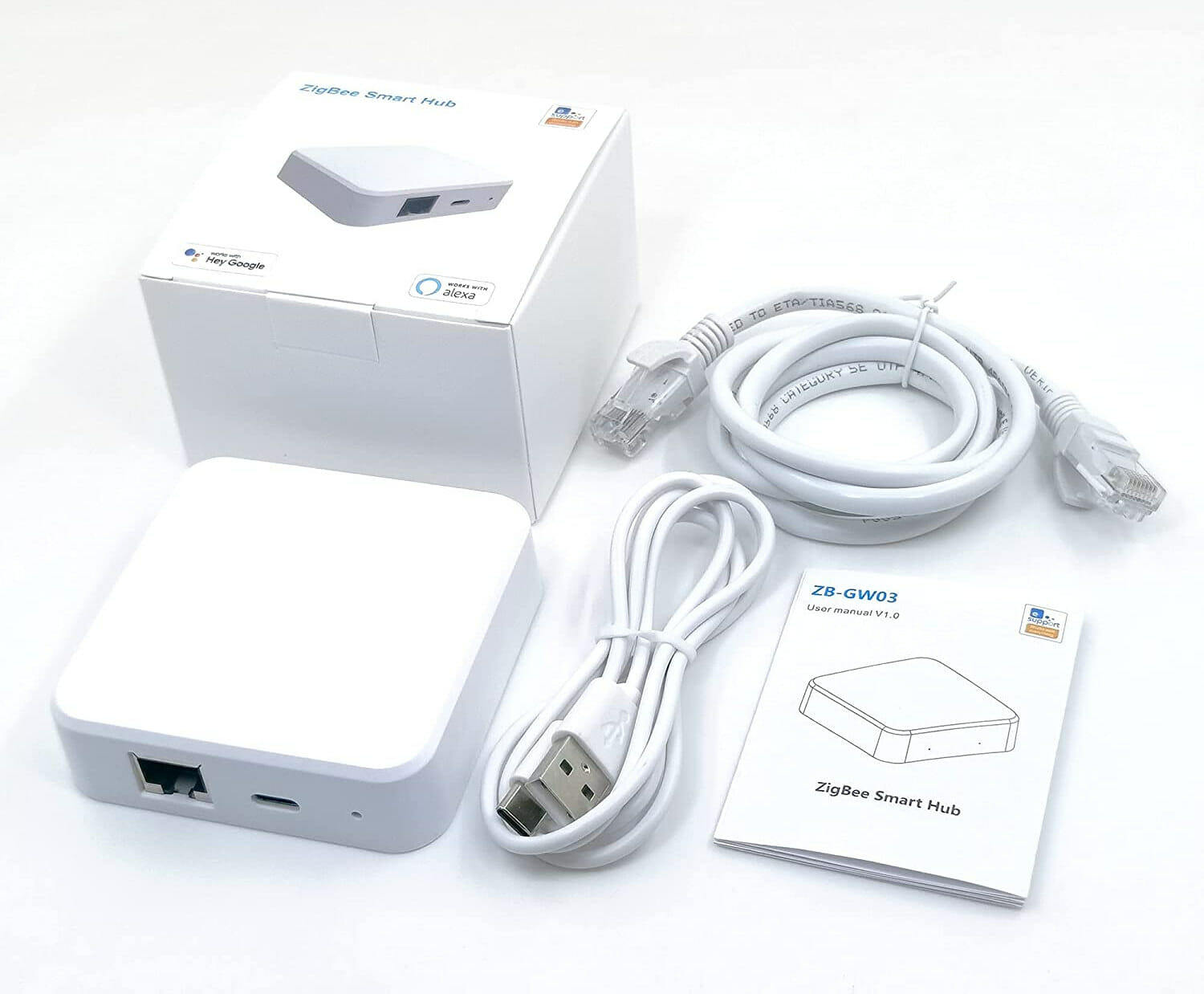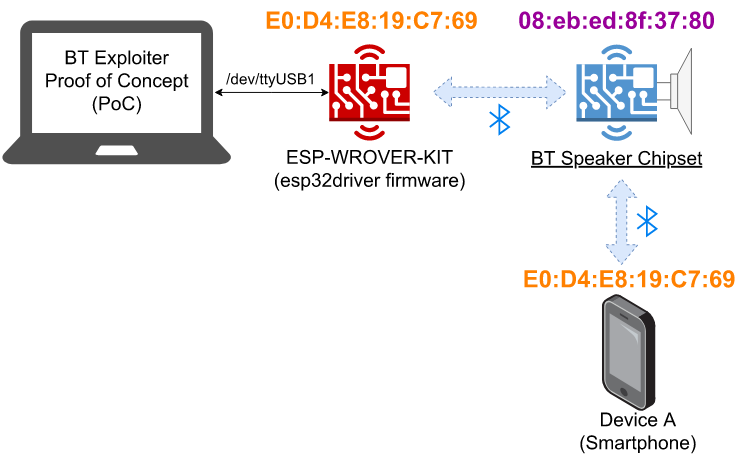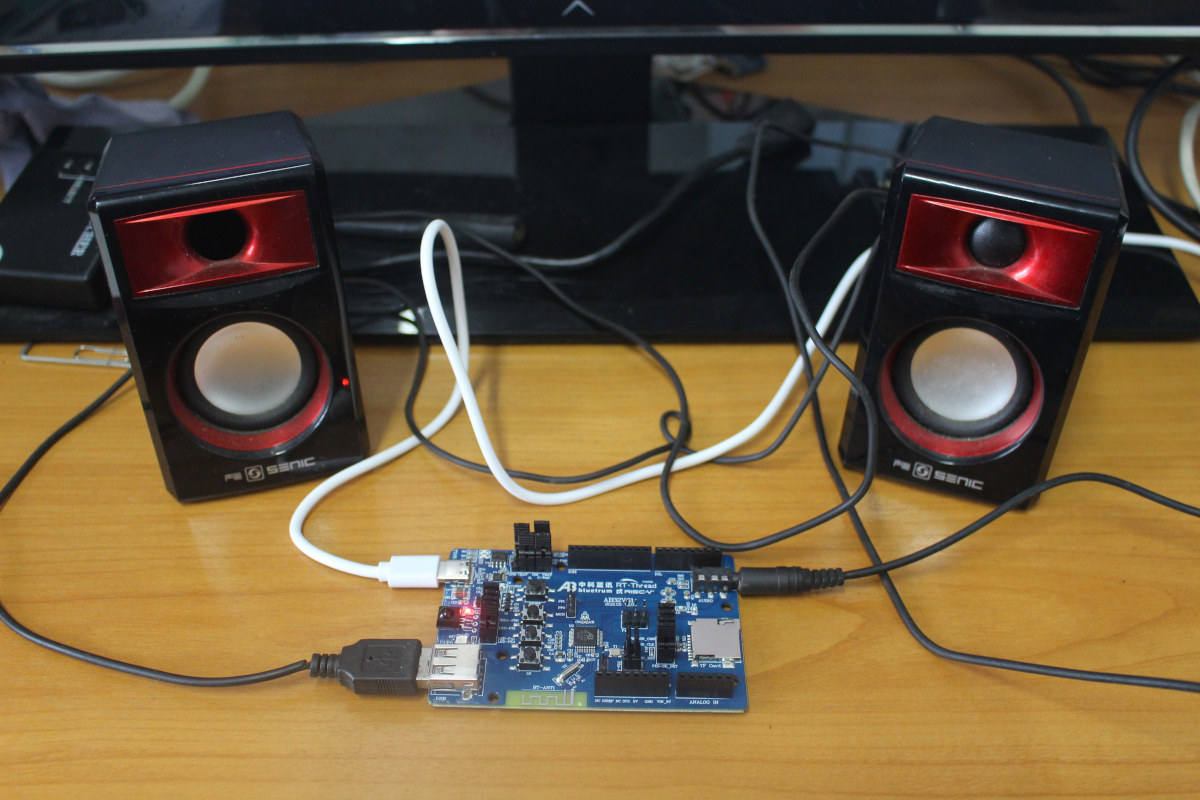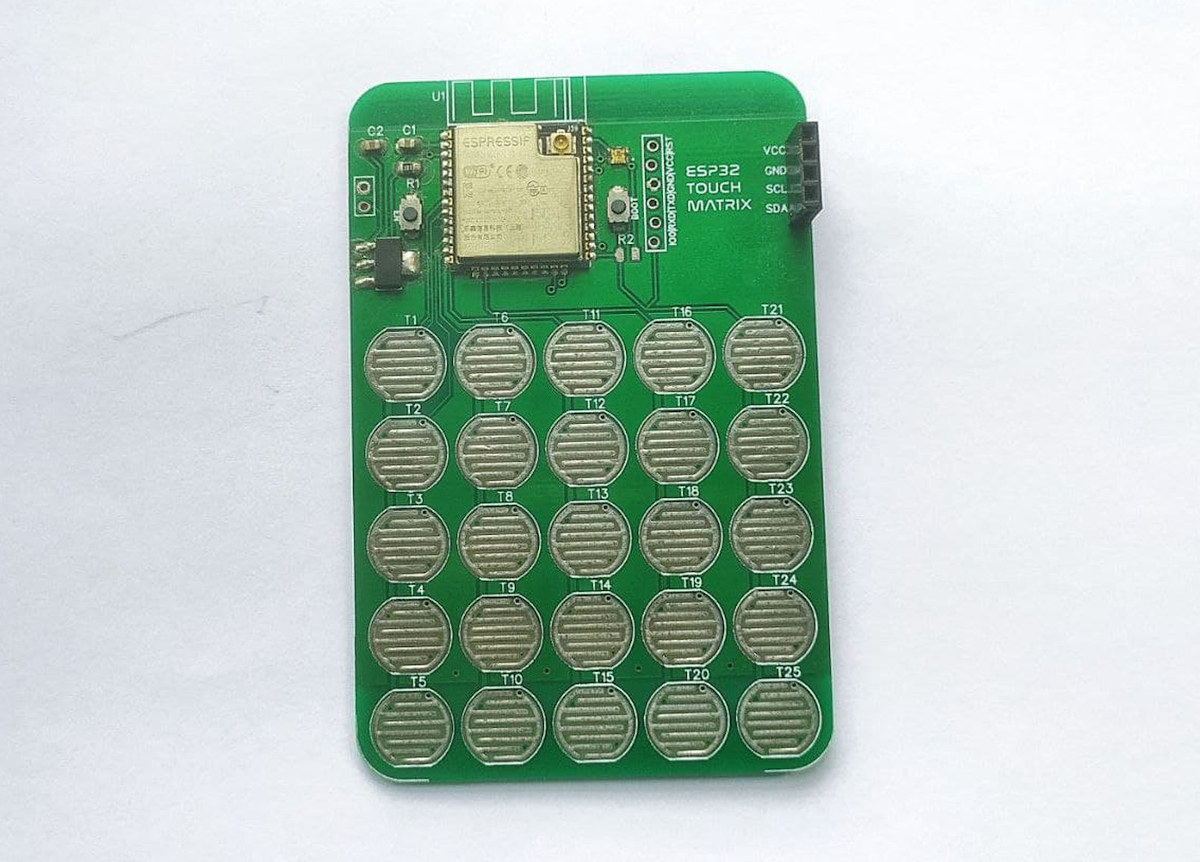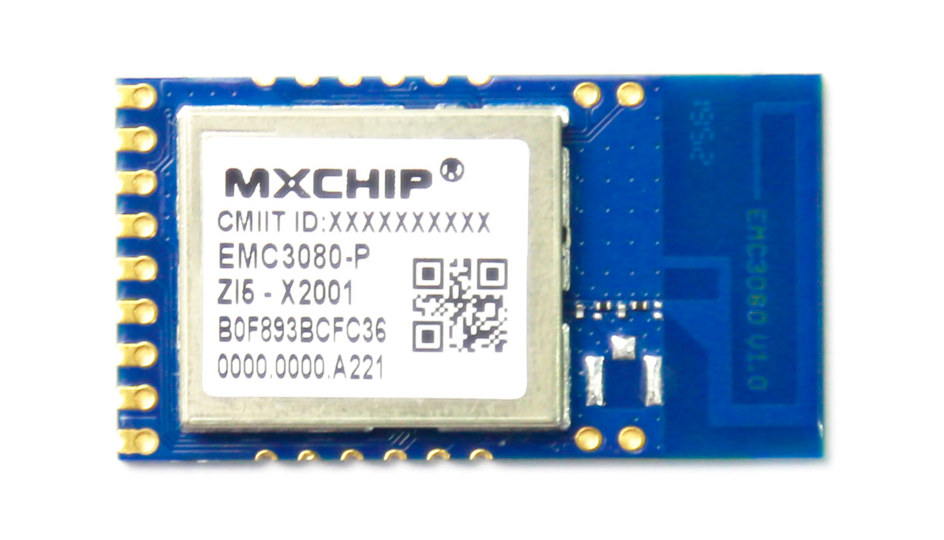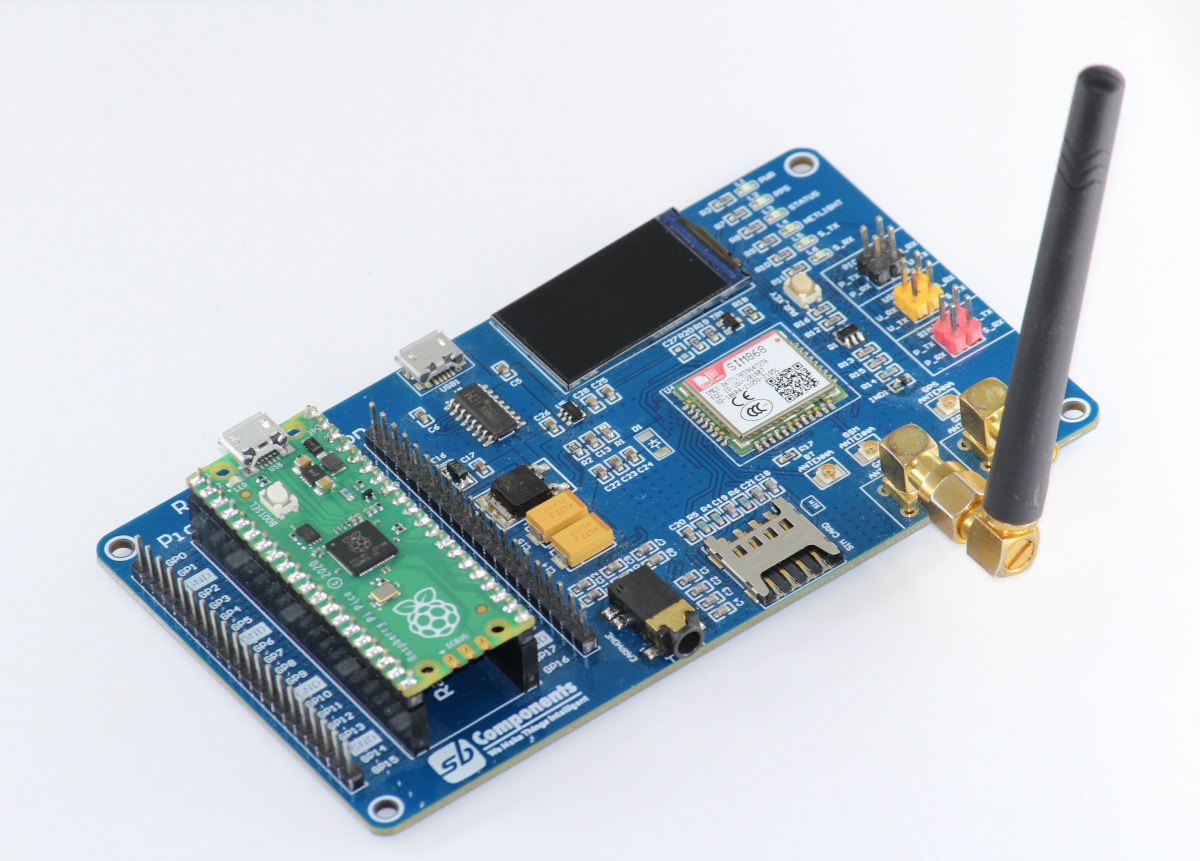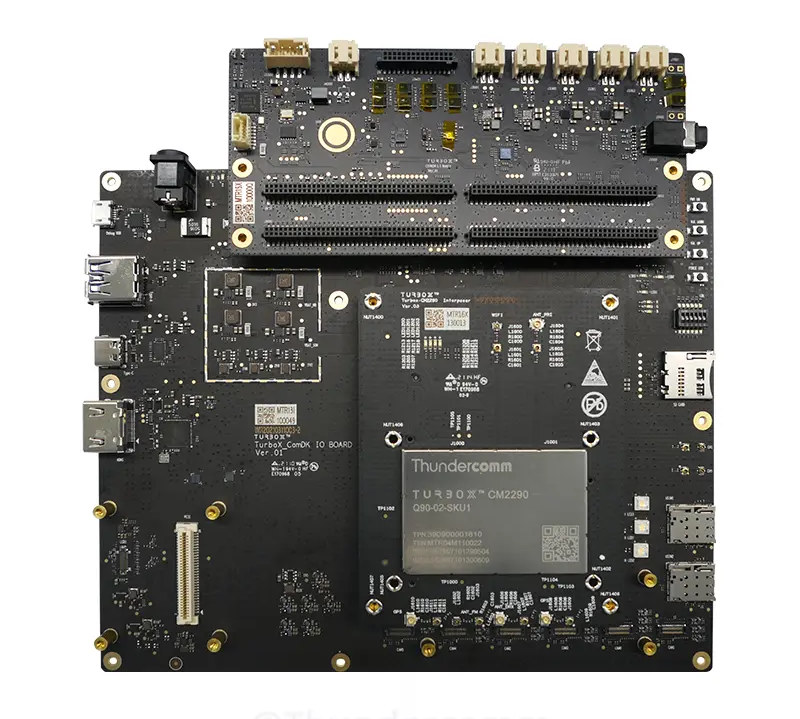ZB-GW03 is an Ethernet Zigbee Gateway compatible with eWelink mobile app and with a design similar to SONOFF ZBBridge gateway but replacing ESP8266 SoC by ESP32 SoC, and adding an Ethernet port. The ZB-GW03 gateway is apparently based on the same Silicon Labs EFR32MG21 Zigbee Arm Cortex-M33 chip and has been hacked to run Tasmota open-source software for people preferring more flexibility and/or integration with OpenHAB or Home Assistant open-source home automation frameworks via Zigbee2MQTT. ZB-GW03 gateway specifications: Main MCU – Espressif Systems ESP32 dual-core Tensilica TX6 processor @ 240 MHz with WiFi 4 and Bluetooth connectivity Zigbee MCU – Silicon Labs EFR32MG21 Arm Cortex-M33 MCU @ 80 MHz with Zigbee 3.0 connectivity Connectivity 10/100M Ethernet, WiFi, and Bluetooth via ESP32 Zigbee 3.0 via Silabs MG21 MCU with support for 128 nodes, up to 200+ meter range One 2.4 GHz Zigbee antenna One 2.4 GHz PCB antenna for WiFi Misc […]
BrakTooth vulnerabilities impact closed-source Bluetooth stacks used in chips from Espressif, Intel, Qualcomm…
BrakTooth is a family of new security vulnerabilities in commercial, closed-source Bluetooth Classic stacks that range from denial of service (DoS) via firmware crashes and deadlocks to arbitrary code execution (ACE) in certain IoT devices. A team from Singapore has discovered 16 new security vulnerabilities after evaluating 13 Bluetooth devices from 11 vendors, but after browsing through the list of certified Bluetooth devices with impacted processors, they estimate it could impact 1400 devices. We can see the list of BrakTooth-impacted SoCs include some familiar names like Intel AX200 (found in many laptops and computers through M.2 cards), Espressif Systems ESP32, Texas Instruments CC2564C, Qualcomm CSR8811/CSR8510, Bluetrum AB32VG1 board (based on AB5301A SoC) which I’ve just reviewed, and more… The good news is that most vendors have either already submitted a patch or working on it. Espressif, Infineon (previously Cypress), and Bluetrum already have released patchsets for their firmware. It’s really […]
Getting started with Bluetrum AB32VG1 RISC-V Bluetooth audio board using RT-Thread
Bluetrum AB32VG1 is a development board based on AB5301A RISC-V microcontroller designed for Bluetooth audio applications as well as general-purpose projects that works with RT-Thread real-time operating system. RT-Thread sent me a board for review, and I’ll write about my experience in a getting started guide for Bluetutm AB32VG1 trying out the RT-Thread Studio IDE with the LED blink and audio samples, as there’s no Bluetooth sample at this time… Bluetrum AV32VG1 Unboxing The board ships with a USB-C cable for power and programming. It offers Arduino UNO headers for expansion, a MicroSD card slot, a USB host port, a 3.5mm audio jack, an IR receiver, and a few buttons. There’s nothing to do on the bottom of the board apart from a QR Core for the WeChat app. There are also several configuration jumpers, but I could not find any documentation about these and did not mess with the […]
25-key ESP32 Touch Matrix makes good use of ESP32’s touch sensor interface
Besides the addition of Bluetooth, there are many differences between ESP8266 and ESP32 and one of the lesser-known interfaces may be ESP32’s touch sensor interface. India-based Electro Point’s ESP32 Touch Matrix makes good use of the touch sensor interface with 25 touch pads arranged in a 5×5 matrix creating a wireless keypad that could connect over WiFi or Bluetooth to a host. ESP32 Touch Matrix board specifications: Wireless module – ESP32-WROOM-32U with Espressif ESP32-D0WD dual-core Tensilica processor, 32Mbit SPI flash, 2.4 GHz WiFi, and Bluetooth LE connectivity 25 keys arranged in a 5×5 matrix Expansion – 4-pin I2C header for expansion, e.g. an OLED display Programming – Programming headers Misc – RGB status indicator, EN button Power Supply – 5V input via 2-pin header; built-in 3.3v regulator for ESP32 Dimensions – TBD When a capacitive load, such as a human hand) is in close proximity to the sense-pad, the sensor […]
Bluetooth 5.3 new features lower latency, interference, improve battery life, security
Bluetooth 5.3 Core Specification was adopted on July 13, 2021, without fanfare, and the only related announcement that I could find is CEVA RivieraWaves Bluetooth IP getting support for Bluetooth 5.3. Bluetooth 5.3 brings four new features or enhancements and removes one extension from the core specification: Periodic Advertising Enhancement – The AdvDataInfo (ADI) field of the common extended advertising payload format may now be included in AUX_SYNC_IND protocol data units (PDUs) which are broadcast when a device is performing periodic advertising. The Bluetooth Low Energy (LE) controllers may now use the information in the ADI field to recognize packets that contain retransmitted copies of identical or semantically equivalent data, and discard those packets in order to prevent unnecessary processing on the nodes, and make sure the overall throughput is not affected due to retransmitted packets. Encryption Key Size Control Enhancement – In Bluetooth BR/EDR, encryption key sizes are negotiated […]
$2 MXCHIP EMC3080 WiFi and Bluetooth LE IoT module integrates Cortex-M33 MCU
While nowadays most people from the maker community are working with ESP8266 or ESP32 modules or boards for IoT projects requiring Bluetooth LE and/or WiFi connectivity, we’ve also covered some low-cost alternatives such as Bouffalo Labs BL602 or Realtek RTL8710. MXCHIP EMC3080 module offers yet an alternative with 2.4 GHz 802.11 b/g/n WiFi and Bluetooth LE 4.2/5.0. Where it differentiates against other solutions is that it features a more secure Cortex-M33 core clocked at 100 MHz, as found in UNISOC V5663 and Ameba RTL8722DM wireless SoCs, but still getting a fairly low price tag of $2.35 on Seeed Studio, which drops to $2.10 per pieces for orders of 10 or more units. MXCHIP EMC3080 module specifications: MCU – MX1300CF Cortex-M33 processor at up to 100 MHz with 256KB SRAM, 2MB XIP flash, 384 or 512 bytes OTP memory Connectivity WiFi 802.11 b/g/n 1T1R WiFi @ 2.4GHz Single Frequency HT20 support […]
Pico 2G Expansion adds GSM/GPRS & GNSS to Raspberry Pi Pico (Crowdfunding)
You may have heard about the 2G/3G sunset with the older cellular networks being phased out in many countries. But it’s not always straightforward, as telecom operators may have to obtain regulators’ permission for the shutdown notably because of the eCall emergency services integrated into cars in Europe. Eventually, eCall will be migrated toward IMS Voice and 2G M2M services to 4G LTE IoT and 5G LPWA, but in the meantime, 2G networks are still operating in parts of the world, and UK-based SB Components has just introduced the Pico 2G Expansion board for Raspberry Pi Pico based on the SIM868 module. Raspberry Pi Pico 2G Expansion specifications: Compatible with Raspberry Pi Pico board Display – 1.14-inch LCD Cellular & GNSS Connectivity SIM868 module with GPRS multi-slot class 12/10, mobile station class B GSM 850/900/1800/1900 MHz GNSS – GPS/GLONASS/BDS Bluetooth 3.0 with audio support SIM card holder 2x SMA antenna […]
Qualcomm QCM2290/QCS2290 SoM and Devkit target Industrial IoT applications
Last June, Qualcomm introduced several industrial IoT solutions that we did not cover at the time with Qualcomm QCM2290/QCS2290 IoT chip for camera applications, industrial handhelds, retail and tracking, Qualcomm QCS8250 WiFI 6 & 5G SoC for connected healthcare, digital signage, retail, and video collaboration, Qualcomm QCS6490/QCM6490 WiFI 6E & 5G SoC for connected healthcare, logistics management, retail, transportation, and warehousing, and Qualcomm QCS4290/ QCM4290 designed for cameras, industrial handhelds, and security panels with 4G LTE and WiFi 6 connectivity. Shortly after Qualcomm’s announcement, Thundercomm introduced the TurboX C2290/CM2290 system-on-module respectively based on Qualcomm’s quad-core Cortex-A53 QCS2290 SoC and QCM2290 SoC adding 4G connectivity. The module also offers WiF & Bluetooth, as well as MIPI display & camera interfaces, and the TurboX CM2290/C2290 development kit is also available to get started. TurboX CM2290 and C2290 SoM Specifications: SoC – Qualcomm Snapdragon QCM2290 or QCS2290 quad-core Cortex-A53 processor at up to […]


